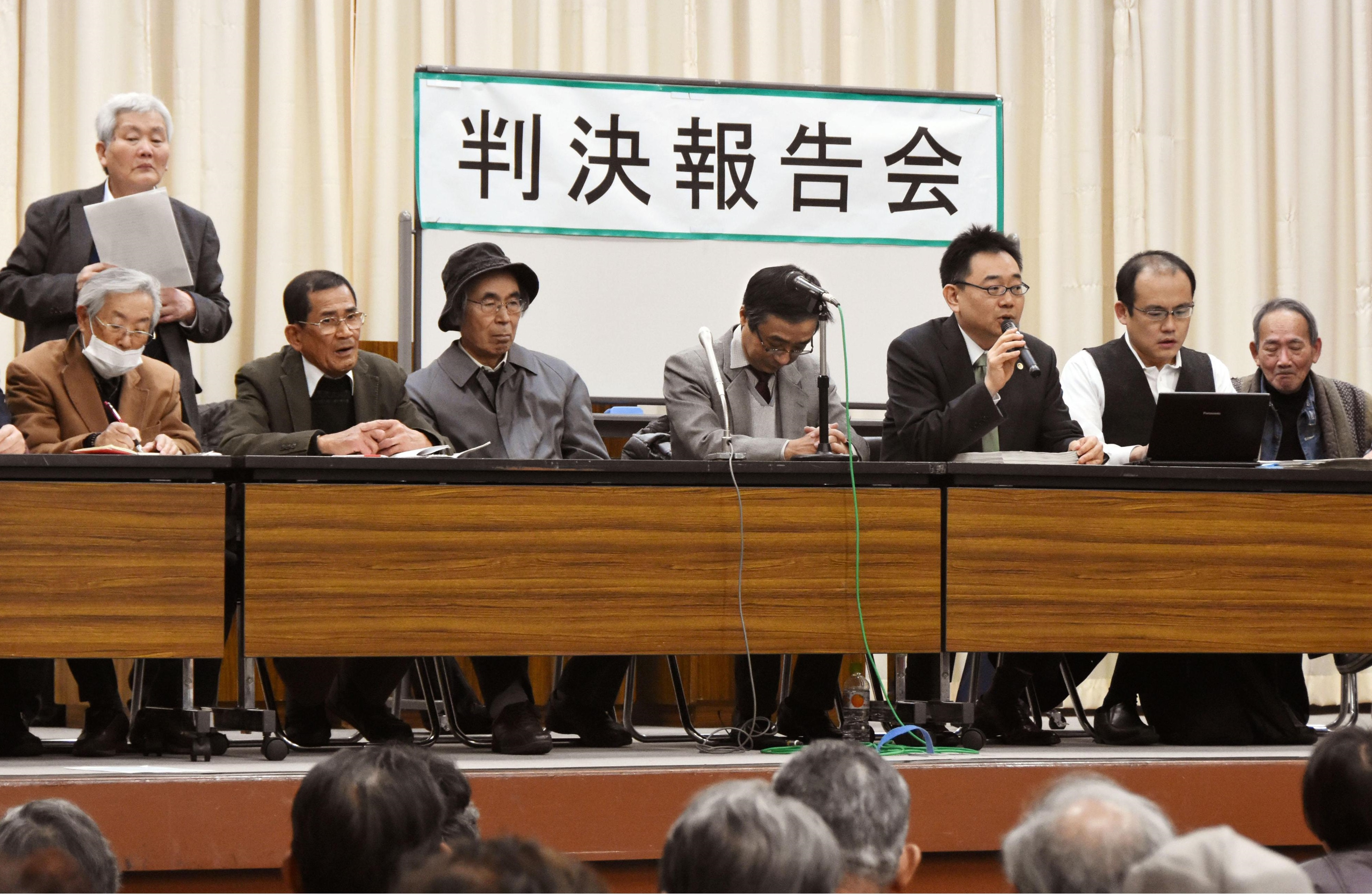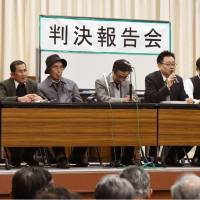The Nagasaki District Court has accepted the claims of 10 plaintiffs seeking official recognition as atomic-bomb survivors eligible for special assistance.
They were among 161 plaintiffs who argued they experienced the wartime U.S. atomic bombing of the city on Aug. 9, 1945, within 12 km of ground zero.
The plaintiffs are defined as individuals "who experienced the bombing," not hibakusha (atomic-bomb survivors), who are provided with health books and entitled to full compensation, including medical assistance.
The plaintiffs failed to receive such recognition as they were outside the oval-shaped, government-designated zone stretching around 7 km from east to west and about 12 km from north to south.
The ruling is the first to order the issuance of health books for such people, according to the plaintiffs' lawyers.
The plaintiffs were seeking to get the Nagasaki Prefectural and Municipal governments to issue the health books so they can receive assistance under the law for support for atomic-bomb survivors.
In delivering the ruling, presiding Judge Takayuki Matsubasa said that "people who were exposed to radiation stemming from the atomic bomb more than 10 times higher than that in the natural world could suffer damage to health."
The court examined estimated dosage figures submitted by the plaintiffs and determined that only 10 can be recognized to have received those levels of radiation, the judge said.
The health ministry released a statement saying that "as we are examining the contents (of the ruling), we will decide how to respond by consulting with relevant ministries, and the Nagasaki Prefectural and Municipal governments."
The Nagasaki District Court rejected a suit by 395 plaintiffs who filed a similar suit in 2012, prompting them to appeal to the Fukuoka High Court.




